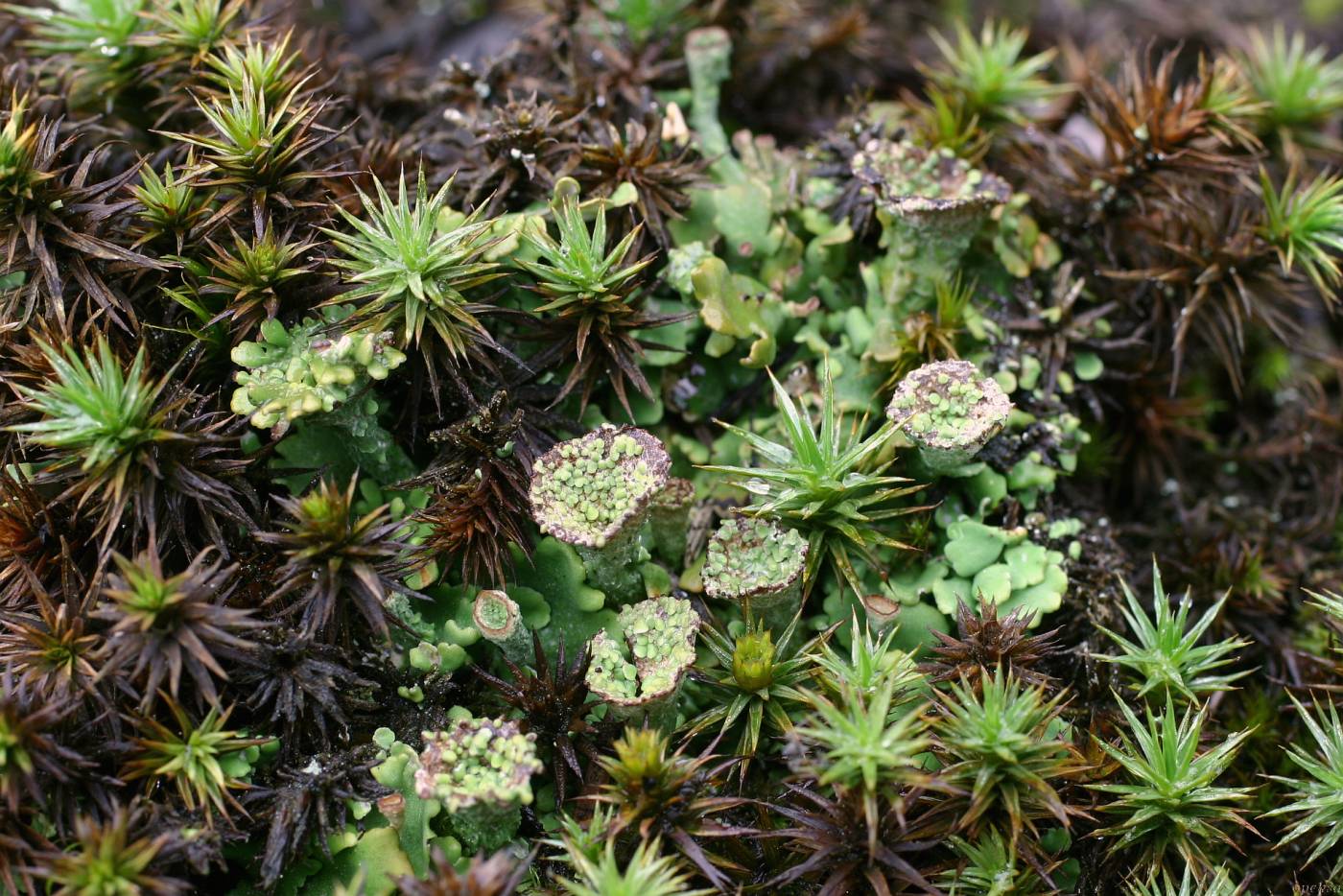A species characterized by wide scyphi with coarsely corticate, granular to squamulose surface of podetia. There are coarse plate-shaped granules inside of the scyphus. Cladonia pyxidata is a terricolous species of acidic soil, growing in open habitats, such as rock outcrops, screes, heathlands, sandbanks and relic pine forests. It also occurs directly on rocks, in cracks or places with a thin soil layer, and rarely on tree bases. It is abundant in Europe. In the Czech Republic, the lichen is distributed from lowlands to mountains and most localities are of natural character.
Its taxonomic circumscription requires further studies (Ahti & Stenroos 2013). There are problematic taxa, e.g., C. monomorpha, described from the Netherlands, which differs in richly squamulose podetia (Aptroot et al. 2001). Such forms corresponding to its description are rare in the Czech Republic and according to our observations, they are a part of the variability of C. pyxidata. The ecotype C. pocillum grows on basic substrates and differs in well-developed and compact primary squamules. Some forms of C. pyxidata may also be confused with species of C. chlorophaea group.
Literature: Ahti T. & Stenroos S. (2013): Cladoniaceae. – In: Ahti T., Stenroos S. & Moberg R. [eds], Nordic Lichen Flora 5: 87–89. Aptroot A., Sipman H. J. M. & van Herk C. M. (2001): Cladonia monomorpha, a neglected cup lichen from Europe. – Lichenologist 33: 271–283.
taxonomic classification:Ascomycota → Lecanoromycetes → Lecanorales → Cladoniaceae → Cladonia
most frequented synonyms:Cladonia monomorphaRed List (Liška & Palice 2010):LC – least concern
Occurrence in the Czech Republic
All records: 1330, confirmed 483. One click on a selected square displays particular record(s), including their source(s).

